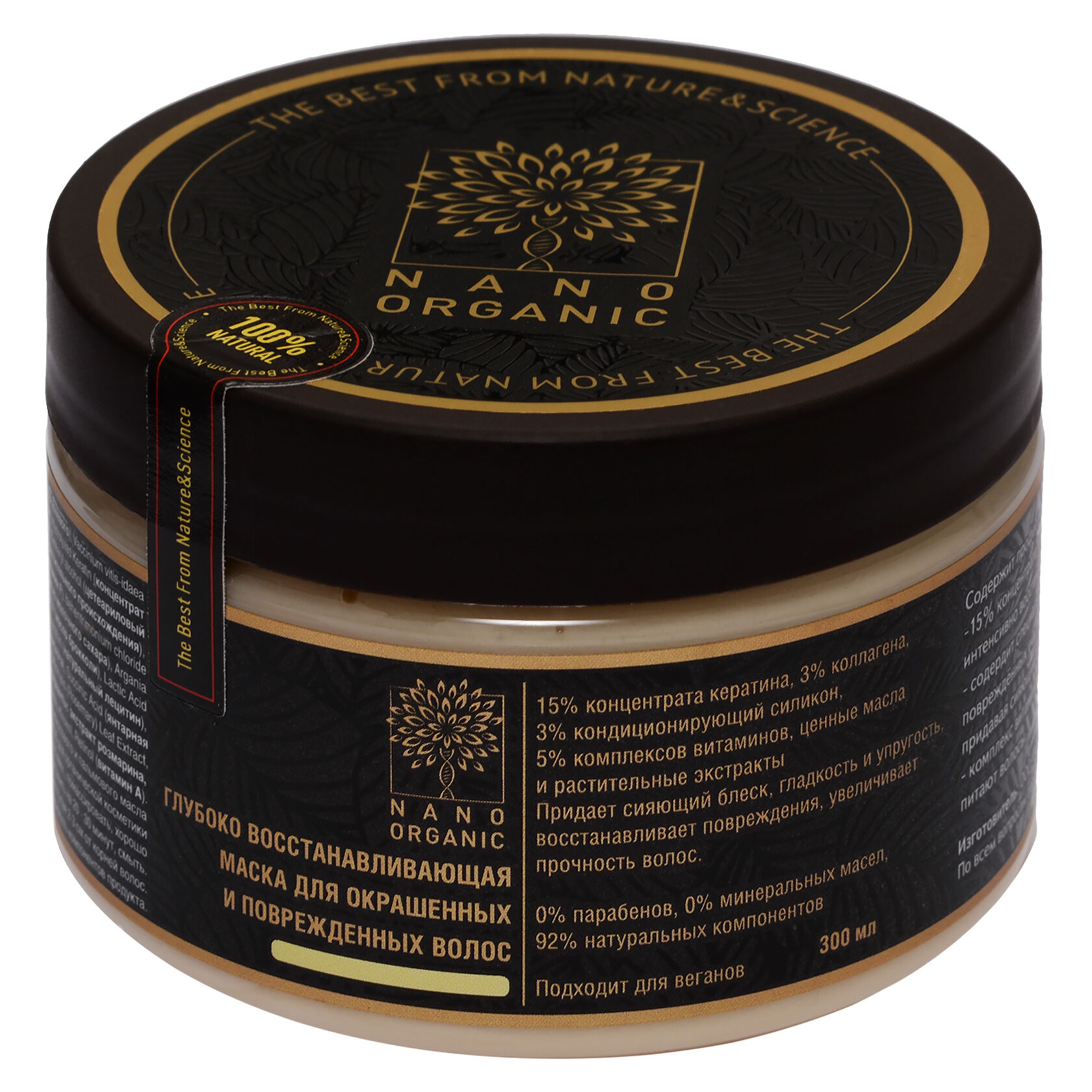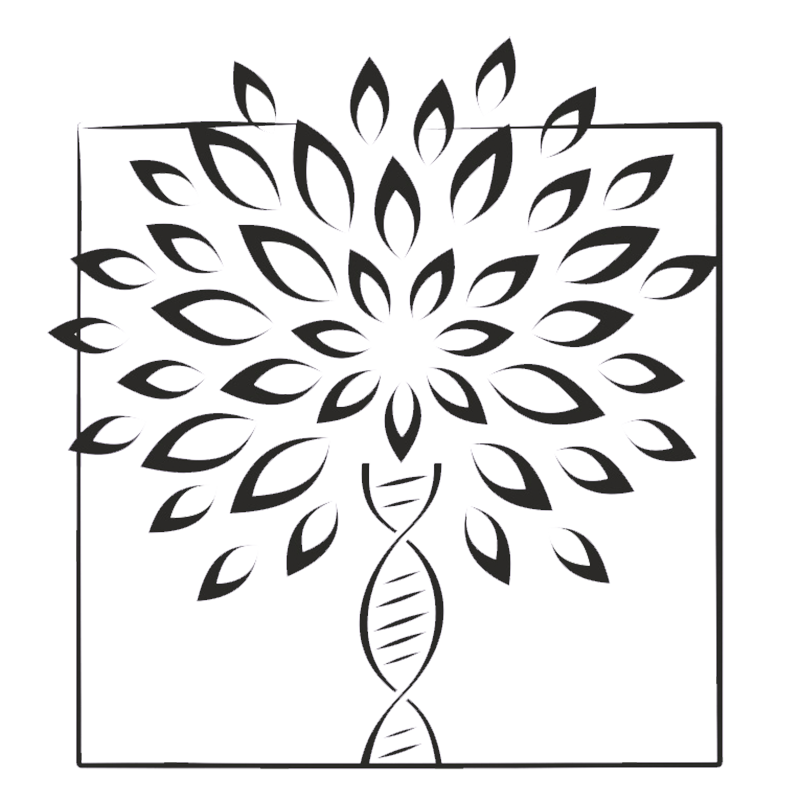
NanoOrganic
manager@naturcosmet.ru
+7 (915) 330-35-96
+7 (915) 330-35-96
Глубоко восстанавливающая маска
Реставрирует поврежденные участки волос, придавая гладкость и блеск. Облегчает расчесывание и продлевает яркость цвета.
для окрашенных и поврежденных волос

Комплекс витаминов A, B5, C, E, F (5%), масла арганы и брокколи
глубоко питают волосы.
Концентрат фитокератина и гидролизат растительного коллагена
интенсивно восстанавливают поврежденные участки волос.
Специальный силикон (амодиметикон)
фиксируется на поврежденных участках кутикулы, при этом смывается водой со здоровых участков, придавая волосам блеск и гладкость.
Состав
manager@naturcosmet.ru
+7 (915) 330-35-96
+7 (915) 330-35-96
Состав
вода (Aqua); экстракт хвоща полевого (Equisetum Arvense Extract), экстракт клюквы (Oxycoccus Quadripetalus (Cranberry) Extract), экстракт фиалки трёхцветной (Violet (Viola Tricolor) Flower Extract); фитокератин (Hydrolyzed Soy and Rice Proteine); растительный коллаген (Hydrolized Wheat Proteine); цетеариловый спирт* (Cetearyl Alcohol); кондиционер растительного происхождения* (Distearoylethyl Dimonium Chloride, Cetearyl Alcohol); витамин F (Linoleic, Linolenic Acids); силикон (Amodimethicone); антистатик, кондиционер (Behentrimonium Chloride); провитамин B5 (Panthenol); пребиотик сорбитол (Sorbitol); масло арганы (Argania Spinosa Oil); масло брокколи (Brassica Oleracea Italica Seed Oil); молочная кислота (Lactic Acid); коньячная камедь (Amorphophallus Konjac Root Powder); лецитин (Lecithin); натуральный витамин E (Tocopherols Blend); лимонная кислота (Citric Acid); янтарная кислота (Succinic Acid); витамин C (L-ascorbic Acid); натуральные консерванты: экстракт розмарина, Nipaguard SCE * (Natural Preservatives: Rosmarinus Officinalis (Rosemary) Leaf Extract, Nipaguard SCE (Sorbitan Caprylate, Propanediol, Benzoic Acid)); эфирные масла: ромашки, полыни, мяты курчавой (Essential Oils: Chamomilla Recutita (Camomile), Artemisia Absinthum Herb, Mentha Spicata Leaf); натуральные пищевые ароматизаторы: клюква, малина, яблоко (Natural Fragrances: Cranberry, Raspberry, Apple); витамин А (Retinol).
(*) разрешены европейскими системами экосертификации для органической косметики
(*) разрешены европейскими системами экосертификации для органической косметики
Разбор состава
Способ применения
нанести маску на чистые влажные волосы, как минимум, на 5 мин., помассировать, хорошо смыть водой. Для интенсивного восстановления – обернуть пленкой и оставить на 20 – 30 минут, смыть.
Внимание! Как все средства с силиконами, маску желательно наносить, отступая 2-3 см от корней волос.
Внимание! Как все средства с силиконами, маску желательно наносить, отступая 2-3 см от корней волос.
Рекомендации
Наука
Исследования
Ниже можно посмотреть некоторые научные статьи, подтверждающие эффективность используемых активов. Слово "Источник" является активной ссылкой, перенаправляющей на первоисточник на платформе PubMed (общемировая платформа научных статей по медицине, биохимии, биологии) или других научных ресурсах.
Chen H. J. et al. Evaluating the Antioxidants, Whitening and Antiaging Properties of Rice Protein Hydrolysates //Molecules. – 2021. – Т. 26. – №. 12. – С. 3605.
Wattanasiritham L. et al. Isolation and identification of antioxidant peptides from enzymatically hydrolyzed rice bran protein //Food Chemistry. – 2016. – Т. 192. – С. 156-162.
Zhang R. et al. Protection effects of rice protein hydrolysate on UVB-irradiated photodamage in Hartley guinea pigs skin and human skin fibroblasts //Journal of Functional Foods. – 2021. – Т. 82. – С. 104504.
Secchi G. Role of protein in cosmetics //Clinics in dermatology. – 2008. – Т. 26. – №. 4. – С. 321-325.
Burnett C. et al. Safety assessment of hydrolyzed wheat protein and hydrolyzed wheat gluten as used in cosmetics //International journal of toxicology. – 2018. – Т. 37. – №. 1_suppl. – С. 55S-66S.
Мурашкин Н. Н. и др. Инновации в терапии атопического дерматита, осложненного вторичной инфекцией //Педиатрическая фармакология. – 2018. – Т. 15. – №. 4.
Yang M., Zhou M., Song L. A review of fatty acids influencing skin condition //Journal of cosmetic dermatology. – 2020. – Т. 19. – №. 12. – С. 3199-3204.
Spagnol C. M. et al. Ascorbic acid in cosmetic formulations: Stability, in vitro release, and permeation using a rapid, inexpensive, and simple method //Journal of Dispersion Science and Technology. – 2017. – Т. 38. – №. 6. – С. 901-908.
Ravetti S. et al. Ascorbic acid in skin health //Cosmetics. – 2019. – Т. 6. – №. 4. – С. 58.
Ehrlich M. et al. Improvement in the Appearance of Wrinkles with Topical Transforming Growth Factor β1 and l‐Ascorbic Acid //Dermatologic surgery. – 2006. – Т. 32. – №. 5. – С. 618-625.
Trommer H. et al. Role of ascorbic acid in stratum corneum lipid models exposed to UV irradiation //Pharmaceutical research. – 2002. – Т. 19. – №. 7. – С. 982-990.
Kim S., Lee T. G. Stabilization of l-ascorbic acid in cosmetic emulsions //Journal of industrial and engineering chemistry. – 2018. – Т. 57. – С. 193-198.
Raschke T. et al. Topical activity of ascorbic acid: from in vitro optimization to in vivo efficacy //Skin pharmacology and physiology. – 2004. – Т. 17. – №. 4. – С. 200-206.
Stettler H. et al. A new topical panthenol-containing emollient: Results from two randomized controlled studies assessing its skin moisturization and barrier restoration potential, and the effect on skin microflora
Journal of Dermatological Treatment. – 2017. – Т. 28. – №. 2. – С. 173-180.
Journal of Dermatological Treatment. – 2017. – Т. 28. – №. 2. – С. 173-180.
Bissett D. L. Common cosmeceuticals
Clinics in dermatology. – 2009. – Т. 27. – №. 5. – С. 435-445.
Clinics in dermatology. – 2009. – Т. 27. – №. 5. – С. 435-445.
Pavlačková J. et al. In vivo efficacy and properties of semisolid formulations containing panthenol
Journal of cosmetic dermatology. – 2019. – Т. 18. – №. 1. – С. 346-354.
Journal of cosmetic dermatology. – 2019. – Т. 18. – №. 1. – С. 346-354.
Yoshioka A. et al. Anti-oxidant effects of retinoids on inflammatory skin diseases //Archives of dermatological research. – 1986. – Т. 278. – №. 3. – С. 177-183.
Zasada M., Budzisz E. Retinoids: Active molecules influencing skin structure formation in cosmetic and dermatological treatments //Advances in Dermatology and Allergology/Postȩpy Dermatologii i Alergologii. – 2019. – Т. 36. – №. 4. – С. 392.
Słoczyńska K. et al. Skin metabolism established with the use of MetaSite for selected retinoids employed in topical and systemic treatment of various skin disorders and found in cosmeceuticals //Acta Biochimica Polonica. – 2015. – Т. 62. – №. 2.
Ramos-e-Silva M. et al. Anti-aging cosmetics: Facts and controversies //Clinics in dermatology. – 2013. – Т. 31. – №. 6. – С. 750-758.
Packer L., Valacchi G. Antioxidants and the response of skin to oxidative stress: vitamin E as a key indicator //Skin Pharmacology and Physiology. – 2002. – Т. 15. – №. 5. – С. 282-290.
Nachbar F., Korting H. C. The role of vitamin E in normal and damaged skin //Journal of Molecular Medicine. – 1995. – Т. 73. – №. 1. – С. 7-17.
Thiele J. J., Ekanayake-Mudiyanselage S. Vitamin E in human skin: organ-specific physiology and considerations for its use in dermatology //Molecular aspects of medicine. – 2007. – Т. 28. – №. 5-6. – С. 646-667.
El Abbassi A. et al. Physicochemical characteristics, nutritional properties, and health benefits of argan oil: A review //Critical reviews in food science and nutrition. – 2014. – Т. 54. – №. 11. – С. 1401-1414.
El Abbassi A. et al. Physicochemical characteristics, nutritional properties, and health benefits of argan oil: A review //Critical reviews in food science and nutrition. – 2014. – Т. 54. – №. 11. – С. 1401-1414.
